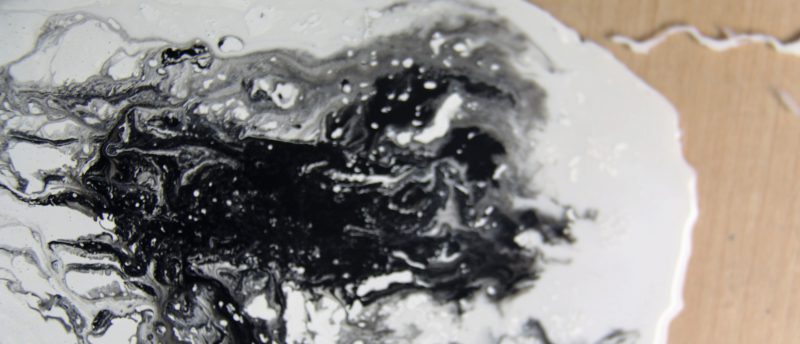White acrylic is used as the base canvas, the consistency between acrylic and water ratio affects the flucency of the black ink’s movement across a pentrable canvas.
Visual: Abstract Ink Effects
Technique: Liquid Acrylic Drawing with Black Ink
For this initial exploration, the trials were set to determine the ideal mixture ratio between acrylic and water, to create a “canvas” where the applied ink could produce organic line and shape quality. The ways the fluids react, create visuals that are close to impossible to mimic with the human hand. These fascinating moments are to be explored in this experimental series.


1st Trial
Water : Acrylic = 3 : 5
I started off with a decent volume of water, the result was splendid at the early phase but subsequently, the ink starts to dissipate on the watery surface. Ideally, the visual quality should consist of both fine line and abstract motion, but this ratio doesn’t allow the line to stay in place.

2nd Trial
Water : Acrylic = 2 : 5
Certainly, the ink is able to hold its position and stay afloat the surface tension, but this sacrifices the effect attain if the acrylic was more dilute. From here, I also start to move away from direct representing my imagery instead let the ink fluid movement decide what images I gonna associate it with.


3rd Trial
Water : Acrylic = 4 : 5
The last visual I wish to try was to fully dilute the acrylic paint into a watery base. Enough to let the ink sometimes sink below the mixture or stay afloat the surface tension. This quite similar to marbling painting which the ink is totally unrestrain. Simple blow is enough to push the ink around. The transition of grey is best noted here.


In the end, out of these trails. I extract the patterns that form connections to my subject matters, recorded their process and I should be able to reproduce sometime close again.

